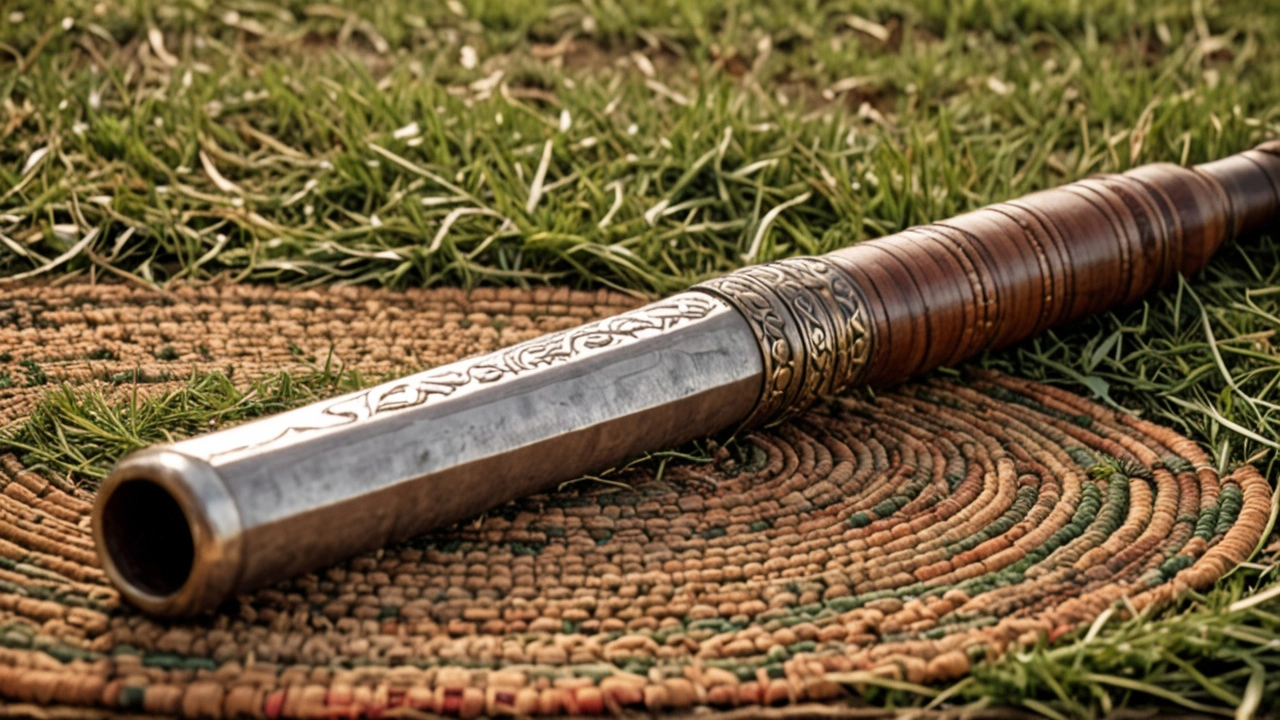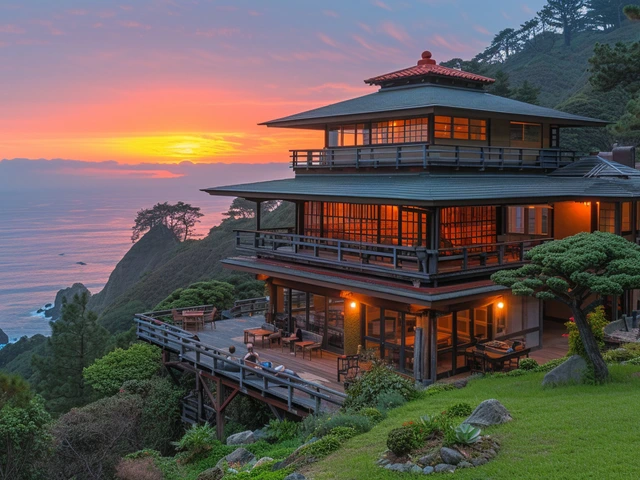The Rungu: Discovering Africa's Traditional Warrior Weapon

The Rungu, a traditional weapon from East Africa, is both a symbol of strength and a tool wielded by warriors. Although it might appear simple at first glance, the history and craftsmanship of the Rungu reveal a deeper story.
Originating from the Maasai and other pastoral tribes in the region, the Rungu has been used for generations as a weapon and a walking stick. Its robust design and easy portability made it an essential part of a warrior’s gear. This link to warrior culture has secured its place as a significant artifact.
Crafting a Rungu is an art form. Typically made from acacia wood, it features a heavy head and a carved shaft, designed to balance resilience and ease of use. The craftsmanship varies, with some Rungus intricately carved with traditional motifs and symbols that carry cultural stories.
Beyond its physical attributes, the Rungu holds cultural importance. In many communities, it is given as a token of honor and respect. Its significance extends to ceremonies, where it is often presented to individuals who have shown bravery or leadership.
In modern times, the Rungu continues to be relevant, not just as a cultural artifact but also as a symbol of heritage and identity. Whether displayed in homes or museums, it continues to tell the story of a rich and vibrant past.
Origins and History
The Rungu holds deep roots in the traditions of East Africa, particularly among the Maasai and other pastoral communities in Kenya and Tanzania. This weapon symbolizes strength and authority, playing a crucial role in the lives of warriors and leaders. Historically, it wasn't just a tool for protection or hunting; it carried immense cultural weight, representing the bearer’s status and bravery.
The earliest evidence of the Rungu dates back centuries, firmly establishing it as a cornerstone of African warrior culture. Tribes handed down the crafting techniques through generations, with each community adding its unique touch. The Maasai, known for their fierce warrior traditions, particularly favored the Rungu, using it during ceremonies, rites of passage, and even as a prestigious award. Trading between tribes also influenced the Rungu's design, leading to a variety of styles and decorations.
One fascinating aspect is the Rungu's role in peace negotiations. Historical records mention instances where the Rungu was exchanged as a peace offering, symbolizing a truce between conflicting tribes. Its sturdy build and formidable appearance ensured that it remained a respected tool across diverse landscapes and communities.
“The Rungu is more than just a weapon; it is a symbol of wisdom, strength, and resilience. Its presence in our cultural artifacts speaks volumes about our ancestors’ way of life.” — Dr. Joseph Karanja, Cultural Historian
Archaeological findings have uncovered Rungus in ancient burial sites, underscoring their importance even in death. Warriors buried with their Rungu were believed to carry their strength and protection into the afterlife. This reflects the deep spiritual connection and respect communities held for this weapon.
The influence of the Rungu spread beyond its immediate locale. During the colonial era, European settlers and explorers noted the Rungu's prominence and began to collect these weapons as souvenirs. Some were amazed by the craftsmanship and the stories behind each piece, taking them back to Europe where they now reside in various museums.
The legacy of the Rungu endures, adapting through time while preserving its core significance. Whether in historical records, oral traditions, or modern depictions, the Rungu remains a powerful emblem of East African heritage. Understanding its origins and history provides a window into the values and lives of the people who wielded it, offering valuable insights into their resilience and ingenuity.

Craftsmanship and Design
The creation of a Rungu is an exquisite blend of art and practicality, where skilled artisans transform raw materials into a fine piece of traditional weaponry. Traditionally, the Rungu is carved from acacia wood, known for its durability and density, which ensures the weapon's longevity. The process begins with selecting the right piece of wood, often chosen for its straightness and the lack of imperfections. This is crucial as it determines the Rungu's strength and balance.
Once the ideal wood is selected, the craftsmanship truly begins. Artisans use hand tools to carve the wood into its iconic shape, which consists of a heavy, rounded head at one end and a tapered handle at the other. The head of the Rungu can vary in size, but it is generally large enough to deliver a powerful blow. This part of the weapon is meticulously polished to achieve a smooth surface, reducing the risk of splinters while enhancing its aesthetic appeal.
In many cases, the handle features intricate carvings that showcase the artisan's skill. These carvings can include geometric patterns, animal motifs, or tribal symbols, each telling a unique story or representing the weapon owner's heritage. The carvings not only enhance the Rungu's beauty but also provide a better grip, which is essential during combat or ceremonial use.
The design of the Rungu is rooted in functionality. It is not merely a weapon but also a symbol of status within the community. Warriors and leaders often carry elaborately decorated Rungus, which are customized to reflect their position and achievements. This personalization might include metal inlays or the incorporation of beads, adding to the visual impact of the weapon.
As noted by anthropologist Paul Spencer, "The Rungu is a manifestation of the skill and cultural identity of its maker. Each piece is unique, a product of both tradition and individual expression."
Besides wood, some modern Rungus are crafted from metal or a combination of materials, blending traditional design with contemporary techniques. This evolution ensures the Rungu remains relevant and functional in modern contexts, whether as a collector's item or a ceremonial object.
An interesting aspect of the Rungu's design is its balance. The weight of the head and the length of the handle are proportioned to allow for swift, powerful swings. The tapering of the handle ensures a comfortable grip, enabling the user to wield the Rungu with precision. This careful consideration of ergonomics underscores the sophisticated understanding of physics that traditional craftsmen possessed.
In sum, the craftsmanship and design of the Rungu are a testament to the rich cultural heritage of the communities that produce them. Every Rungu is a work of art, embodying the skill, history, and identity of its maker. This timeless weapon continues to captivate people, standing as a symbol of resilience and tradition.

Cultural Significance
The Rungu holds a deep cultural significance that transcends its function as a weapon. In the Maasai community, this wooden club is more than just a tool of defense; it is a symbol of power, honor, and manhood. Traditionally, young Maasai warriors, known as morans, are presented with a Rungu as a rite of passage into adulthood. This custom is not merely for the sake of tradition but serves to instill a sense of responsibility and strength in the young men.
The importance of the Rungu is evident in various ceremonies and social structures within the Maasai society. During ceremonies like the Eunoto, which marks the transition from warriorhood to elderhood, the Rungu is prominently displayed and often passed down from one generation to the next. This transfer of the Rungu is laden with meaning, representing the passing of wisdom, strength, and leadership qualities.
Moreover, the Rungu is also used as a symbol of authority by village elders. This shows the weapon's versatility; it is not just a token for young warriors but also a respected symbol among the community leaders. An elder carrying a Rungu signifies his status and the respect he commands within the society. This integration into the social fabric illustrates how deeply the Rungu is embedded in Maasai culture.
Interestingly, the Rungu also finds its place in modern symbolism. For instance, it is often incorporated into ceremonies that celebrate achievements and milestones beyond traditional contexts. It is not uncommon for successful individuals to be awarded a Rungu as a mark of their accomplishments. This modern adaptation shows how the Rungu has evolved yet retained its core meaning through time.
"The Rungu is not just a weapon. It embodies the spirit and resilience of our people," said Maasai elder Ole Nkere.
Beyond the Maasai, other communities in East Africa also share a similar reverence for the Rungu. For many, it forms a part of their cultural heritage and is celebrated in dances, songs, and folklore. These cultural elements keep the spirit of the Rungu alive, embedding it in the collective memory and identity of the people.
The cultural significance of the Rungu extends to the diaspora. Many Africans living abroad keep Rungus in their homes as a connection to their roots. It serves as a constant reminder of their heritage, fostering a sense of pride and belonging. This cultural symbolism demonstrates the universal nature of the Rungu's message across generations and geographical boundaries.

Modern-Day Usage
The Rungu retains its cultural importance even in today’s rapidly changing world. While traditionally a weapon and symbol of power, it has transformed into a versatile object with various modern applications.
One notable use of the Rungu today is in cultural ceremonies and as a sign of respect. Many African communities continue to present the Rungu during important family and tribal rituals. It serves not only as a reminder of ancestral heritage but also as a badge of honor for those who receive it. The wooden weapon often makes an appearance at weddings, where it is given to the groom as a symbol of strength and responsibility.
The artistic value of the Rungu has also been recognized globally. Many artisans create intricately designed Rungus for decor purposes. These beautifully crafted pieces find homes in art galleries and among private collectors who value their aesthetic appeal and cultural significance. The Rungu’s design, combining functionality with artistry, makes it a captivating piece of history turned modern art.
Another contemporary use of the Rungu is in sports and defense training. In some regions, training programs teach traditional methods of self-defense using the Rungu. This not only revives ancient fighting techniques but also provides a unique approach to physical fitness and empowerment. Various clubs and self-defense schools incorporate the Rungu into their curriculum, recognizing its historical importance and practical utility.
In the realm of education, the Rungu is utilized as a teaching tool. Museums and educational institutions often include it in their exhibits to educate visitors about African heritage. These displays offer insights into the social and historical contexts of the weapon, providing a tangible connection to past warrior societies. Interactive exhibits allow students to handle replicas, making the learning experience more engaging.
Additionally, the Rungu has found a niche as a fashionable accessory. In recent years, fashion designers have incorporated elements inspired by the Rungu into their collections. This trend has led to the creation of jewelry, clothing, and even walking sticks that echo the traditional design. By blending tradition with contemporary style, these items provide a fresh take on a classic symbol.
Environmental sustainability also plays a role in the modern use of the Rungu. Artisans who craft Rungus often use sustainably sourced wood, ensuring that their work respects both tradition and nature. This eco-friendly approach not only preserves the environment but also honors the long-standing relationship between the community and their natural resources.
Quotes from community leaders and historians often highlight the enduring relevance of the Rungu. One respected historian noted,
“The Rungu is not just a weapon; it is a link to our heritage, a way to pass down stories and values from generation to generation.”This sentiment captures the multifaceted significance of the Rungu, which continues to inspire and connect people across continents.
Rungu has thus transcended its original purpose to become a versatile and cherished symbol in many areas of modern life. Whether as a token of respect, a work of art, a tool for education, or a fashionable accessory, its presence endures, linking the past with the present in meaningful ways.





